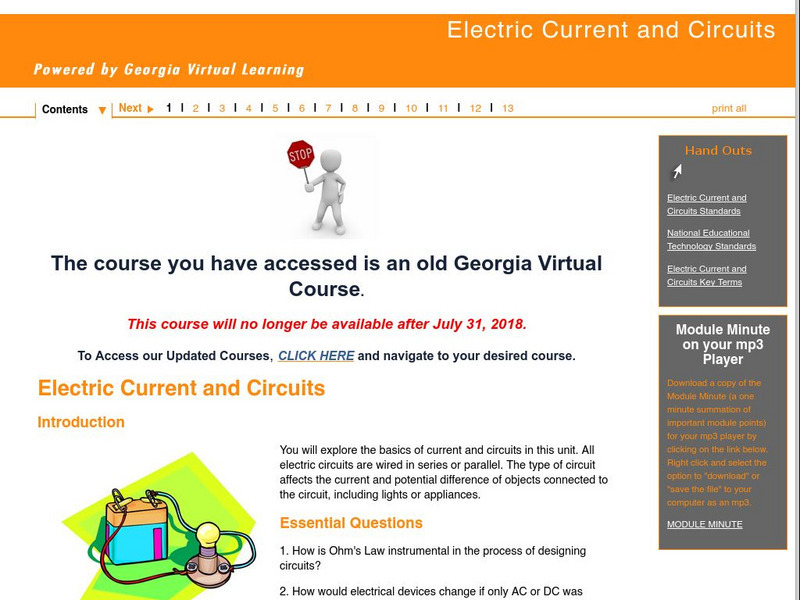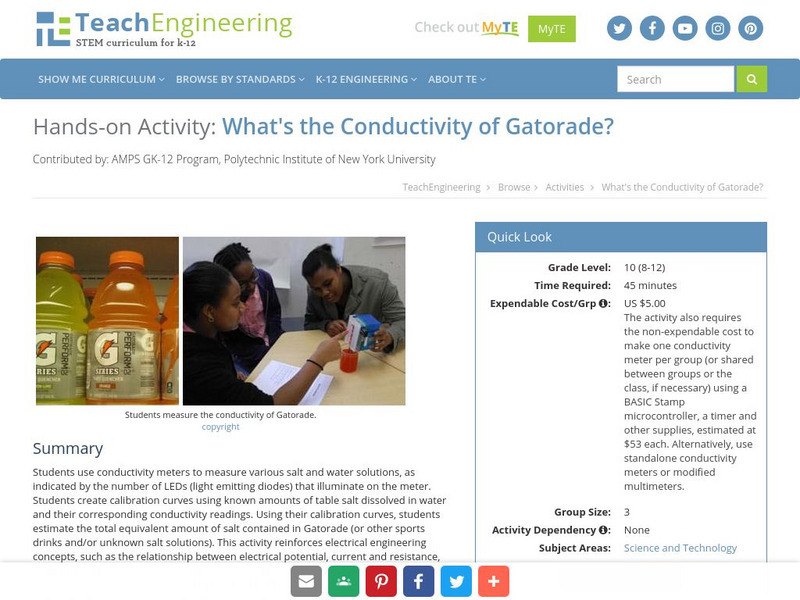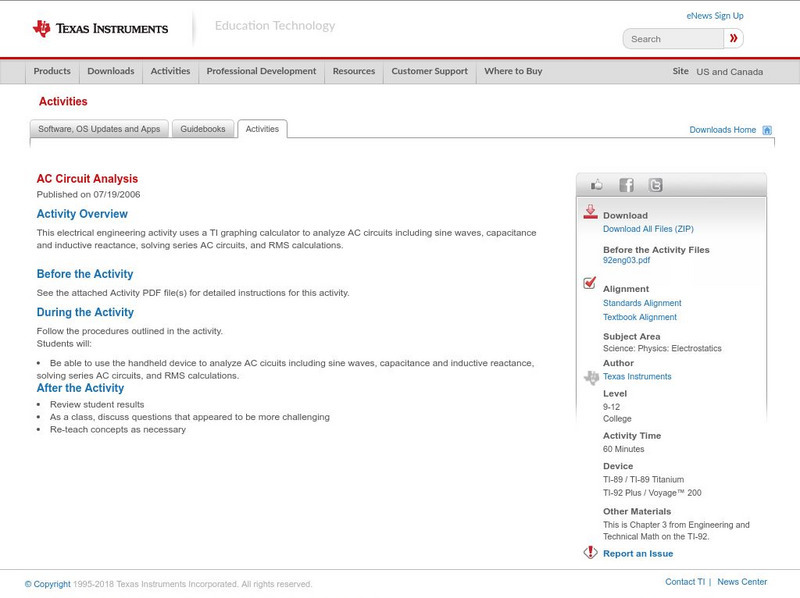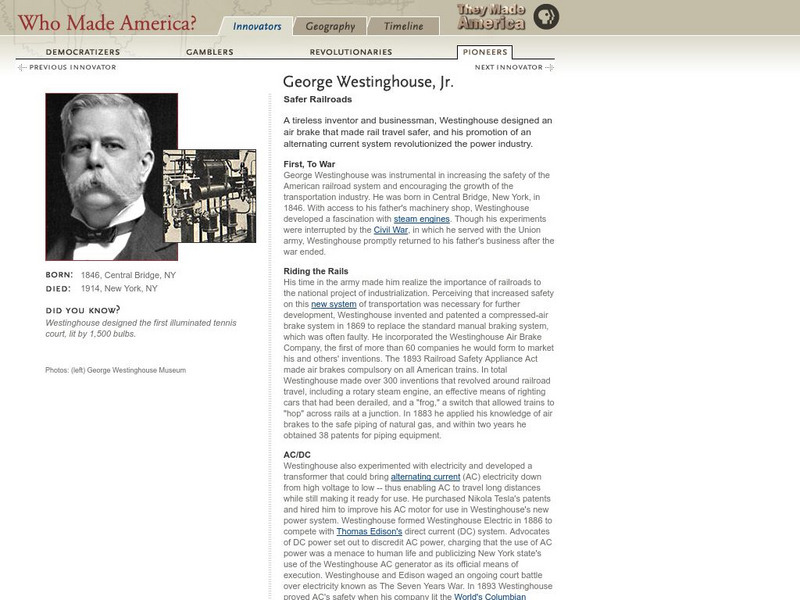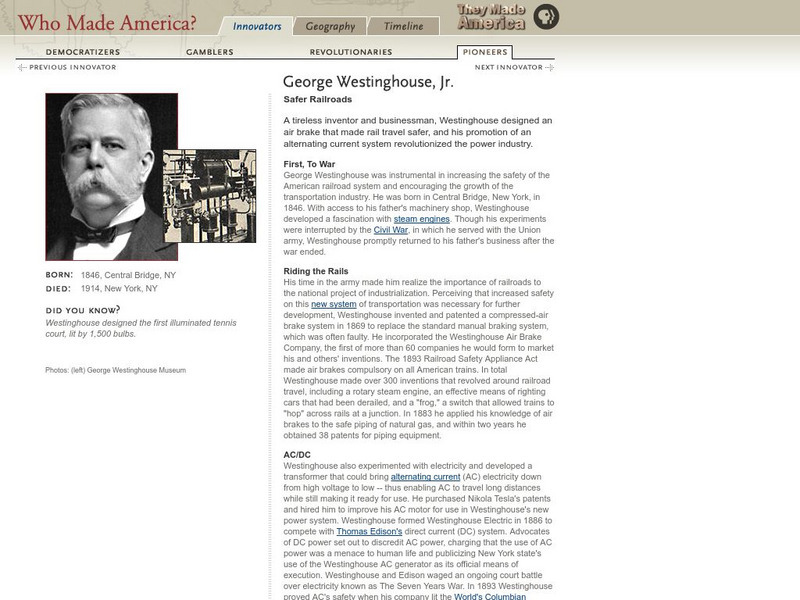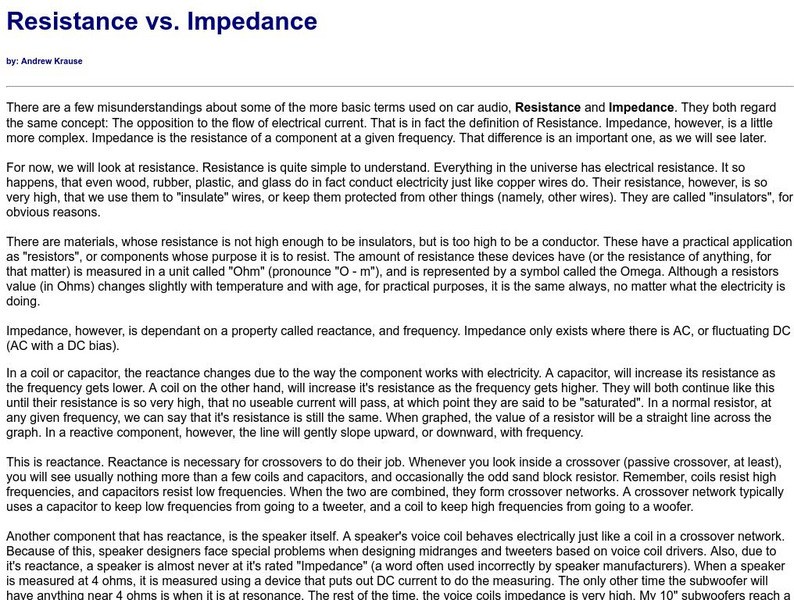Curated OER
AC Negative Feedback Op-amp Circuits
In this electrical circuit learning exercise, students draw a schematic design and build a op-amp model to show understanding of AC-negative feedback op-amp circuits before answering a series of 14 open-ended questions with schematics....
Curated OER
Sources of Electricity
In this online electricity worksheet, students are asked 10 questions about electric current and battery energy, an online answer key provided.
Curated OER
AC metrology
In this worksheet, students are asked 11 questions about AC currents and transformers and volt meters. Students can check answers online.
Curated OER
AC Filtering With Capacitors
Students investigate the properties of capacitors and discover that capacitors block DC and filter AC. They discover the function of capacitors. Students differentiate between AC and DC power. They explore the role of resistors.
Georgia Department of Education
Ga Virtual Learning: Electric Current and Circuits
Students have the opportunity to explore the basics of current and circuits in this online module. Some of the activities include interactive animations, informational text, practice problems, and lab experiments.
University of Colorado
University of Colorado: Ph Et Interactive Simulations: Circuit Construction Kit (Ac+dc)
This new version of the CCK adds capacitors, inductors and AC voltage sources to your toolbox! Now you can graph the current and voltage as a function of time. Java required.
TeachEngineering
Teach Engineering: What's the Conductivity of Gatorade?
Students use conductivity meters to measure various salt and water solutions, as indicated by the number of LEDs (light emitting diodes) that illuminate on the meter. Students create calibration curves using known amounts of table salt...
Web Elements
Web Elements Periodic Table: Actinium
WebElements offers a nice set of basic data and information on the physical and chemical properties of actinium.
Georgia State University
Georgia State University: Hyper Physics: Ac Circuits
A very comprehensive site organized well with many topics dealing with AC circuits.
Boston University
Elementary Physics: Current and Resistance
A general summary of electrical resistance including a comparison of AC and DC current.
Texas Instruments
Texas Instruments: Ac Circuit Analysis
This electrical engineering activity uses a TI graphing calculator to analyze AC circuits including sine waves, capacitance and inductive reactance, solving series AC circuits, and RMS calculations.
Florida-Spectrum Environmental Services
Florida Spectrum: Chemical Fact Sheet: Actinium
Some basic information stressing isotopes and half lives.
Royal Society of Chemistry
Chemical Society: Actinium
A short summary of some basic historical information on actinium.
TED Talks
Ted: Ted Ed: Actinium: Periodic Table of Videos
The team at periodicvideos has created a TED-Ed Lesson for every element of the periodic table. Actinium is element number 89, and first of the actinide series. [1:44]
PBS
Who Made America?: Innovators: George Westinghouse, Jr.
One-page profile of influential innovator, George Westinghouse, Jr., whose vision and ideas helped to increase the safety of the railroad system in America. His experimentation with electricity also had a huge impact on the power...
PBS
Pbs: Who Made America?: George Westinghouse, Jr.
From the series, They Made America, on PBS, this biography of George Westinghouse tells about his development of the air brake for railroad cars, and his experimentation with alternating current that revolutionized the transmission of...
Other
Fayette County Public School: The Current War
A summation of the War of the Currents featuring Nikola Tesla and Thomas Edison against a backdrop of The Columbian Exposition and an execution.
National High Magnetic Field Laboratory
Magnet Academy: Alternating Current
Alternating current behaves differently, depending on what components are in a circuit.
CK-12 Foundation
Ck 12: Physical Science: Direct and Alternating Current
[Free Registration/Login may be required to access all resource tools.] Describes the difference between direct current and alternating current.
CK-12 Foundation
Ck 12: Fourth Grade Science: Physical Science: Electric Current
[Free Registration/Login may be required to access all resource tools.] Defines electric current and relates electric current to different materials (insulators and conductors).
Other
Lanl: The Actinide Research Quarterly
This is "The Actinide Research Quarterly", a publication about current research of the actinide metals and nuclear materials technology by Los Alamos National Laboratory. Very detailed information.
MadSci Network
Msn: How Does an Air Conditioner or Refrigerator Work?
From the Mad Scientist Network. Using a question and answer format, this page explains the answer to the question "How does An air conditioner or refrigerator work?" The scientific principles which underly their operation and the process...
Florida State University
Florida State University: Molecular Expressions: Ac Generator Action
Molecular Expressions at Florida State University offers a java applet to show the a working AC generator.
Other
Team Rocs: Resistance vs. Impedance
Compares resistance and impeadance using the example of car audio.






